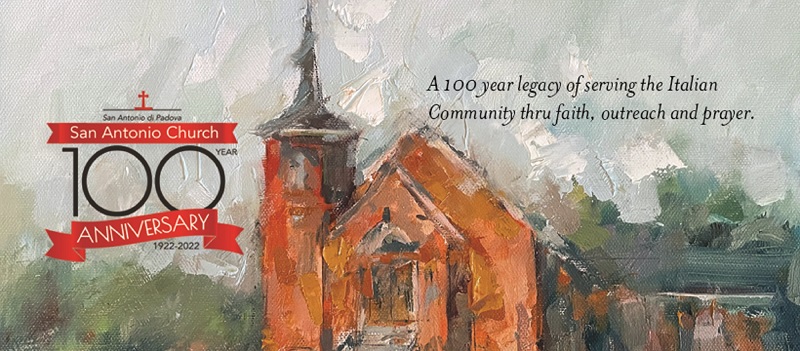We would like to thank everyone who has continued to contribute to the ongoing expenses of San Antonio Church by mailing in their weekly envelopes or by contributing electronically utilizing WeShare . The buttons at the bottom of this post allow you to make online donations directly to the listed account for San Antonio Church.
Weekly Bulletin April 11, 2021
by Terrie Evans
On this 2nd Sunday of Easter, we honor Divine Mercy Sunday, based on the devotion that Faustina Kowalska originated after her encounter with Jesus. A Polish Nun, Faustina Kowalska told of visions and conversations with Jesus and the things he asked her to do in his name. One request was for her to paint the vision of Divine Mercy with his merciful divinity pouring from his Sacred Heart. In her diary she wrote that Jesus told her: “Paint an image according to the pattern you see, with the signature “Jesus, I trust in you” (in Polish: ( “Jezu, ufam Tobie”). “I desire that this image be venerated, first in your chapel, and then throughout the world. I promise that the soul that will venerate this image will not perish.” The other favor he asked of Faustina was to establish a feast of Divine Mercy to be scheduled on the Sunday after Easter for mankind to take refuge in him. “ I want the image solemnly blessed on the 1st Sunday after Easter, and I want it to be venerated publicly so that every soul may know about it.”
This day is associated with special promises from Jesus and also indulgences that will be issued by the Catholic Church. With this devotion, a person who goes to a sacramental confession, even going days prior and then receives holy communion will obtain expiation of all sins and punishment. The Roman Catholic Church will also grant plenary indulgence after reciting some simple prayers. The 1st Mass displaying the image of the Divine Mercy occurred on April 28, 1935 on the 2nd Sunday of Easter with Faustina Kowlaska in attendance.
In July of 1937, the 1st Holy Cards with the Divine Mercy image were printed and by 1941, the devotion had reached the United States with millions of Divine Mercy prayer cards printed and distributed throughout the world. She lived to see the beginning of devotion to the Divine Mercy she had started before her death at the age of 33 on October 5, 1938 in Krakow, Poland. Her final resting place is at the Basilica of Divine Mercy in Krakow, Poland.
In June 2002, Pope John Paul II granted indulgences to Catholics who will recite specific prayers held in honor of Divine Mercy, or pray the Our Father and the Creed in the presence of the Blessed Sacrament (If not able to attend a church or chapel, recite the prayers before an image of Jesus) then add this short prayer “Merciful Jesus, I trust in you.” The other conditions to receive a plenary indulgence are: making a sacramental Confession, going to Communion and prayers for the intentions of the Pope.
`In 1965, then Archbishop of Krakow, Karol Wojtyla (who later became Pope John Paul II) opened the process into Faustina Kowalska’s life and virtues while interviewing witnesses. In 1967, the official process was started for her beatification which lasted until it was official on April 18, 1993. The Roman Catholic Church canonized Faustina Kowalska as a saint on April 30, 2000 by Pope John Paul ll. She is venerated within the church as the “Apostle of Divine Mercy”.
